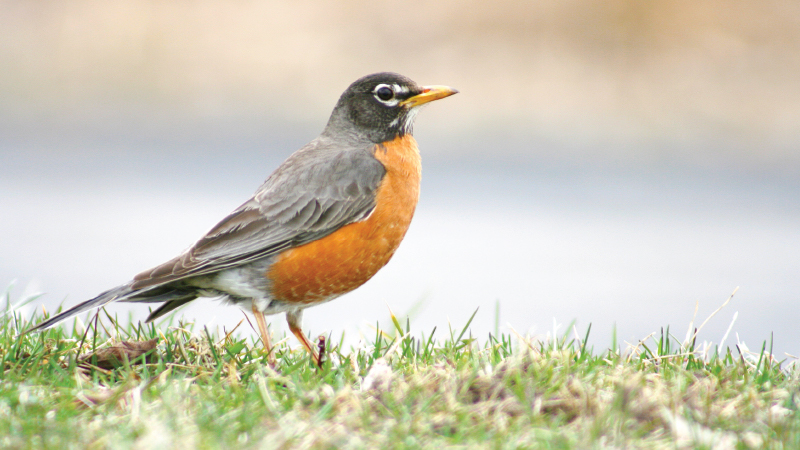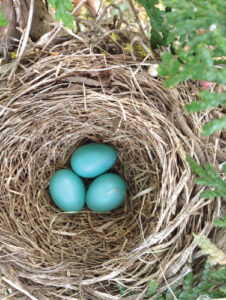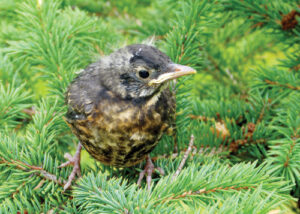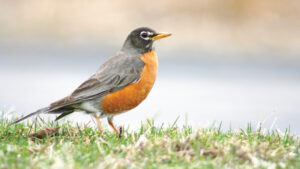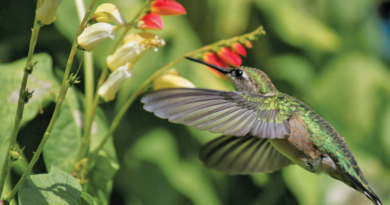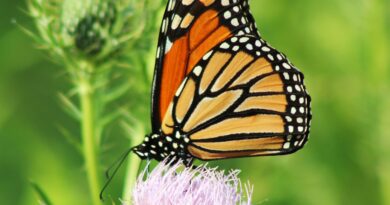Feathered Friends: The American robin
By Sherrie Versluis

There is no bird more recognized in North America than the robin. They are known to many as a true sign of the arrival of spring. After a deep cold winter no one can deny the excitement of seeing their first American robin or hearing their glorious calls fill the morning air. In fact, you are bound to hear people chatting in the grocery store or at the workplace about their first sighting. Little does this bird know the impact it has on us humans and how excited we are to see them. Although, you’d have to think they are just as pleased to be here with all that singing throughout every neighborhood.
American robins are most noted for their rusty-red breasted appearance. They are a fair size for a songbird and are actually the largest of the Thrush family in North America. Both males and females are similar in plumage with the only difference being that the female is slightly paler in colour. The American robin is considered one of the most prolific species in North America, second only to red-winged blackbirds.
Robins are not only one of the first birds to arrive but they are also one of the first to start nesting. The female builds the nest on her own in shrubs or evergreen trees. To encourage American Robin’s to nest in your yard, consider a nesting platform placed in a secluded spot. Robins will have up to three broods per season and will have three to five chicks per nest. The eggs hatch in about 14 days and a mere two weeks later the young will fledge. The chicks are fed a variety of worms, insects and berries.
Once they have left the nest they are unable to fly for approximately two more weeks. During this time the parents continue to feed them on the ground secretly under shrubs and trees. Sadly, during this time predators like free-roaming cats and hawks often prey upon the vulnerable fledglings. Studies have shown that only 25 per cent of young robins survive their first year of life.
The average lifespan of a robin is only about two years but leg bands have shown lengthier life spans of up to 14 years. There are 28 species of birds of prey that hunt robins with some of the most common being Cooper and sharp-shinned hawks, merlins, and American kestrels. Robins spend much of their time on the ground as they search for insects and worms making them easy prey.
The American robin’s diet is a combination of insects and berries. Insects like earthworms, beetle grubs and grasshoppers make up about 40 per cent of their diet while the other 60 per cent is a mix of berries and fruit like crab apples and mountain ash berries. When searching for insects, robins use a multitude of skills like their strong vision and sharp hearing. Studies have shown that robins can even hear worms underground. They will tilt their heads from left to right to detect movement in the soil then pounce upon the spot and pull out their catch. Robins take full advantage of human activities like freshly mowed lawns, sprinklers and freshly turned soil to find food. They will even come to birdfeeders for meal worms, suet and raisins.
Sherrie Versluis owns the Preferred Perch Wild Birds and Specialty gift store in Winnipeg, Man.
Interesting robin facts:
- It is estimated that the entire population of robins turns over about every six years.
- During late fall and winter robins can be found heavily intoxicated from eating fruit and berries that have fermented. They have difficulty flying and have been seen falling right out of trees after consuming the berries.
- The global breeding population of American robins is estimated at 310 million with 45 per cent of that in Canada.
- There have been increasing numbers of partial and full albino robins seen throughout North America. This is also the case with other ground-feeding birds like common grackles, dark-eyed juncos and many native sparrow species. Unfortunately, this anomaly has been linked to the excessive use of lawn chemicals and pesticides. Consider switching to more natural alternatives for your own health and the health of wildlife.



